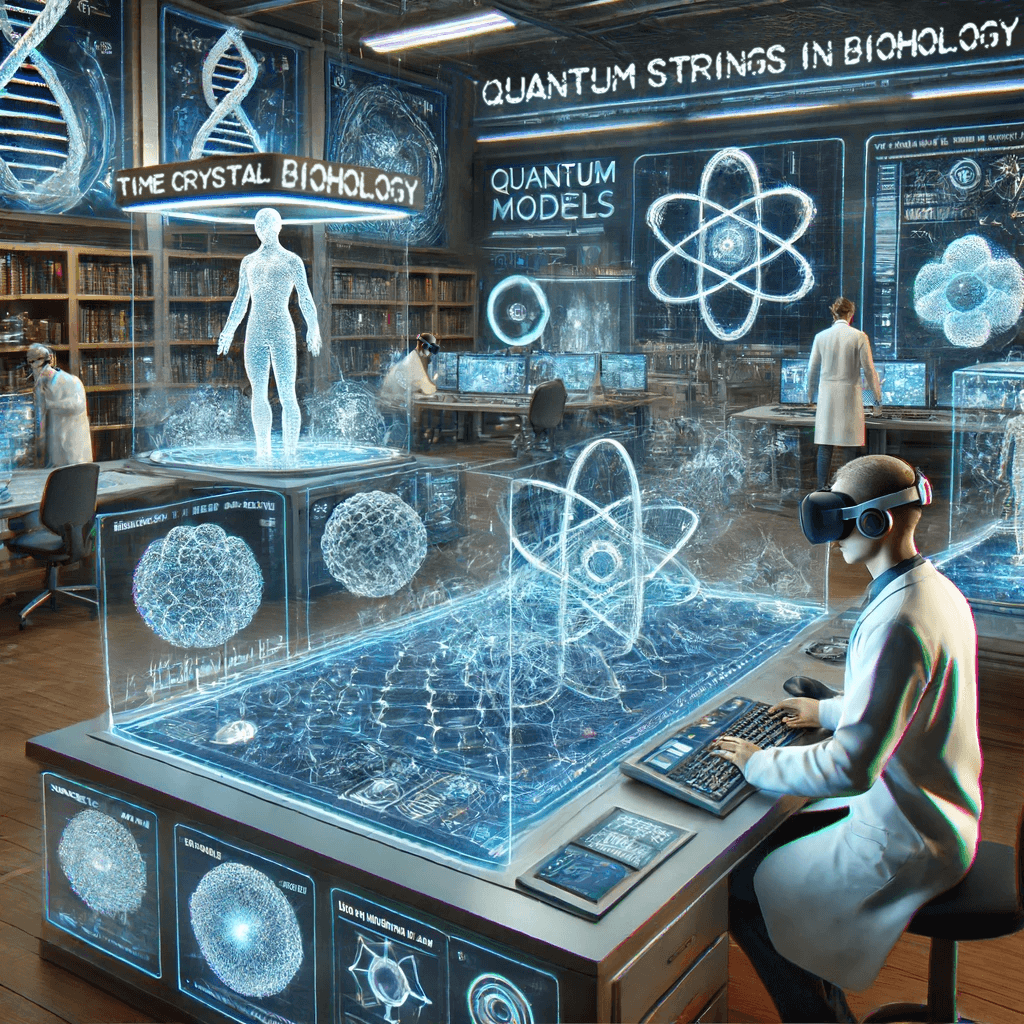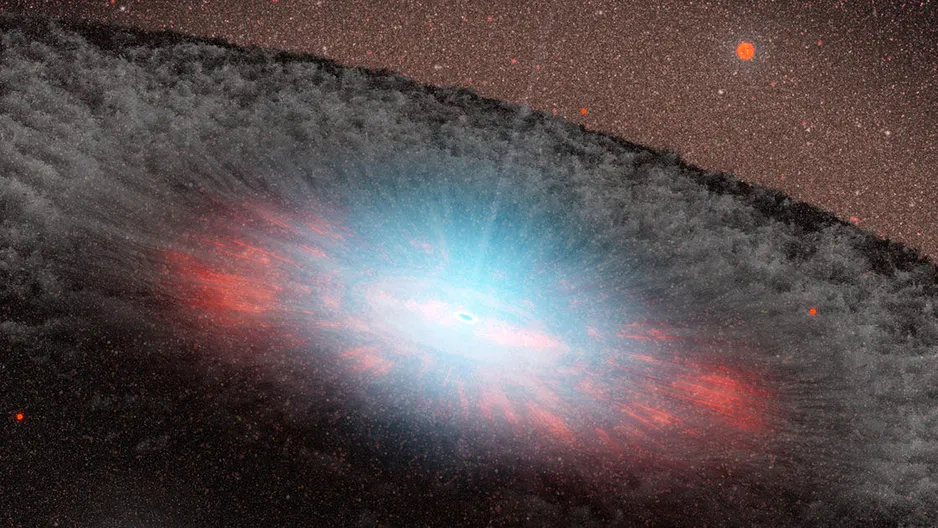Homo Quanticum Centrism & Space Astronauts ESA

Homo Quantum Centrism & Cosmic Evolution ESA: Directions for Humanity in Space Exploration
As humanity ventures further into space, novel paradigms such as “Homo Quantum Centrism” and “Cosmic Evolution ESA” are emerging to guide our journey. This paper explores the integration of advanced technologies, including ElectroStimulation, Holographic Reality, Biohology, and distributed ledger technologies, in supporting astronaut health and recording the Cosmic Evolution ESA during space travels.
1. Introduction
The expansion of human activity into space requires a redefinition of our technological and physiological paradigms. The concept of “Homo Quantum Centrism” suggests a future where humanity adapts to and integrates with quantum technologies, altering our fundamental interactions with the universe. “Cosmic Evolution ESA” refers to the adaptive changes in human societies and biologies in response to the cosmic environment. Together, these frameworks aim to guide our long-term survival and evolution in space.
2. Supporting Astronaut Health in Space
2.1 ElectroStimulation and Holographic Reality
ElectroStimulation, involving the use of electrical signals to stimulate nerve and muscle tissues, is pivotal in maintaining astronaut muscle tone and neural health in microgravity environments. Combined with Holographic Reality, a technology that creates immersive visual and tactile environments, astronauts can engage in simulated physical activities that are crucial for psychological and physiological well-being.
2.2 Biohology: Understanding Biological Changes
Biohology, a field studying the biological changes in organisms through space travel, provides insights into how humans adapt at a cellular level in space. This knowledge is critical for developing interventions that can mitigate the adverse effects of long-duration space travel, such as radiation exposure and bone density loss.
3. Cosmic Evolution ESA Data Management

3.1 The Crucial Role that Energy Flow plays in Cosmic and Cultural Evolution
Energy flow is a fundamental driver of complexity in the universe, linking the evolution of galaxies, stars, and planets with the emergence of life and human culture. In “Cosmos and Culture,” Eric J. Chaisson explains how energy rate density— the amount of energy flowing through a system per unit mass per unit time—serves as a key metric for understanding this complexity. From the early Radiation Era dominated by photons to the Matter Era of galaxy and star formation, and now the Life Era characterized by biological and cultural evolution, energy flow has continually fostered increasing levels of order and sophistication. This interdisciplinary approach reveals how the principles of nonequilibrium thermodynamics enable open systems, including human societies, to develop and sustain complex structures despite the universe’s natural tendency toward entropy. By examining these processes, “Cosmos and Culture” provides profound insights into the dynamic interplay between cosmic and cultural evolution, emphasizing the pivotal role of energy in shaping our past, present, and future. [1]
3.2 Distributed Ledger Technology in Space
The recording and management of biodata related to astronaut health and cosmic adaptation are facilitated by distributed ledger technology. This system ensures the integrity and security of data across a network of nodes located on spaceships and orbital satellite networks. The immutable nature of blockchain technology is ideal for this purpose, providing a tamper-proof record of health and environmental data.
3.3 AI and Quantum Computing
An AI database layer, built on top of the distributed network, enables real-time analysis and predictive modeling of health trends and adaptation strategies. Quantum computers contribute to this framework by offering unprecedented processing power, facilitating complex simulations and optimizations that are beyond the reach of classical computing resources.
4. Quantum Internet and its Implications
The development of a quantum internet through space-based quantum computers and entangled quantum states promises revolutionary changes in communication technologies. This quantum network would not only enhance data security but also enable near-instantaneous communication across vast distances, a critical requirement for deep space exploration.
5. Conclusion
The integration of these advanced technologies represents a holistic approach to addressing the challenges of space travel. Homo Quantum Centrism and Cosmic Evolution ESA provide a conceptual framework for understanding and directing the future of humanity in space, highlighting the synergy between human adaptability and technological innovation. The successful implementation of these technologies will be crucial for the sustainable expansion of human presence beyond Earth.
6. Future Work
Further research is needed to explore the long-term effects of these technologies on human biology and society. Additionally, the ethical implications and governance of such advanced technologies in space must be thoroughly examined to ensure that space exploration remains a humanity benefit. [2]
Introduction
In an era marked by groundbreaking advancements in both science and technology, our understanding of the brain and consciousness is undergoing a transformative shift. The emerging field of biohology—where holographic technology meets biological exploration—promises to revolutionize our approach to understanding the complex interplay of brain functions and bodily processes. By incorporating holographic principles into biological studies, biohology offers a novel perspective that transcends traditional boundaries of neuroscience and physiology. This interdisciplinary approach does not merely enhance our visualization capabilities; it fundamentally alters our conceptual framework for studying biological systems, suggesting that every part of such systems, from the cellular to the organismal level, contains information about the entirety. This comprehensive exploration delves into the nuanced tapestry of theories that integrate quantum mechanics with cognitive science, heralding a paradigm shift towards a more holistic understanding of human consciousness and its biological substrates.
Quantum Mechanics and the Brain: A Historical Perspective
Quantum mechanics traditionally confined to the domain of subatomic phenomena, has ventured into the neural corridors of the human brain, suggesting that quantum processes may underpin our cognitive functions. Pioneers like Sir Roger Penrose and Stuart Hameroff have posited that consciousness could emerge from quantum gravitational effects within the brain’s microtubules. This hypothesis challenges the Newtonian mechanistic view that has dominated neuroscience, proposing instead that quantum states within the brain’s architecture could be the seat of consciousness. The concept of biohology builds on this foundation by suggesting that the holographic nature of quantum processes could be integral to understanding how the brain functions as a coherent whole. This paradigm shift not only enriches our understanding of the brain’s quantum mechanical basis but also integrates these insights into a broader, holographically informed view of brain architecture.
The Holographic Brain Model
The holographic model of the brain, initially proposed by Karl Pribram and later expanded upon in the context of quantum theory by David Bohm, suggests that the brain operates like a hologram, where each part contains all the information of the whole. This model provides a framework for understanding memory and perception that surpasses traditional explanations, aligning well with the principles of quantum non-locality, which posits that information is not localized to specific areas but is distributed throughout the brain’s network. Biohology extends this model by employing holographic technology to visualize and study these holographic patterns within the brain, enhancing our understanding of how information is processed and stored across the cerebral landscape. This approach not only deepens our comprehension of cognitive processes but also underscores the interconnectedness of neural functions across different regions of the brain.
The Quantum-Holographic Synapse
Biohology posits that synapses, the junctions through which neurons communicate, might operate not just on biochemical signals but also through quantum-mechanical and holographic processes. This perspective suggests that synapses could function as dynamic gates for quantum information, linking microscopic quantum events to macroscopic neural networks. This integration of quantum and holographic principles at the synaptic level offers a more nuanced understanding of how brain activity correlates with cognitive functions, potentially leading to more targeted therapies and interventions in neurological disorders. This holistic view, facilitated by biohology, could revolutionize our approach to treating mental and cognitive disorders, offering new pathways for healing and rehabilitation.
Quantum Consciousness and Human Experience
The integration of quantum mechanics into the study of neural processes suggests profound philosophical implications regarding the nature of reality and perception. If consciousness is indeed a quantum mechanical process, this could fundamentally alter our understanding of its nature, potentially explaining phenomena such as entanglement, coherence, and the enigmatic quantum effects observed at the biological level. Biohology, by providing the tools to visualize and analyze these quantum processes within the brain, helps bridge the gap between quantum physics and everyday cognitive experiences, allowing for a deeper exploration of how quantum processes inform consciousness and human identity.
Challenges and Future Directions
Despite its promising prospects, biohology, like all nascent fields, faces significant experimental and theoretical challenges. The integration of quantum mechanics into the moist, warm, biochemically complex environment of the brain poses substantial technical hurdles that need to be addressed through innovative research and methodological advancements. Moreover, the broader implications of a quantum-holographic framework for biology and medicine demand rigorous testing and validation. Future research in biohology will need to bridge these gaps through sophisticated technological innovations and interdisciplinary collaboration, aiming to transform our theoretical insights into practical applications.
Conclusion
Biohology represents a cutting-edge fusion of holographic theory and biological science, providing a new lens through which to view the complexities of life and consciousness. As we delve deeper into the quantum and holographic underpinnings of the brain and body, biohology not only sheds light on fundamental biological processes but also opens up new realms of scientific inquiry and philosophical speculation. By merging quantum mechanics with holographic imaging, biohology not only expands our scientific horizons but also offers a profound new understanding of what it means to be human in an interconnected universe. [3]
[1] Dick, S. J., & Lupisella, M. L. (Eds.). (2009). Cosmos and Culture: Cultural Evolution in a Cosmic Context (NASA SP-2009-4802). National Aeronautics and Space Administration.
[2] Chaisson, E. J. (2002). Cosmic evolution: The rise of complexity in nature. English Edition.
[3] Tarlacı, S. (2010). A Historical View of the Relation Between Quantum Mechanics and the Brain: A NeuroQuantologic Perspective. NeuroQuantology, 8(2), 120-136.

